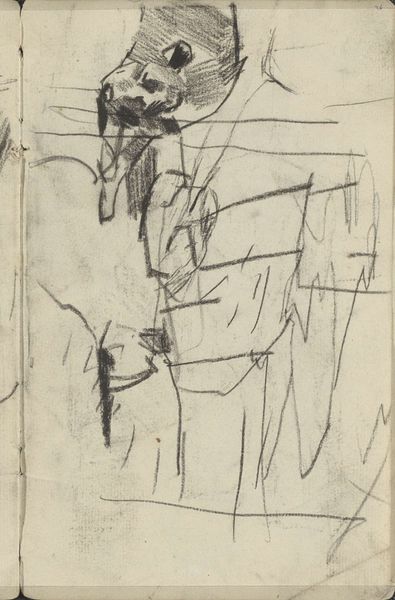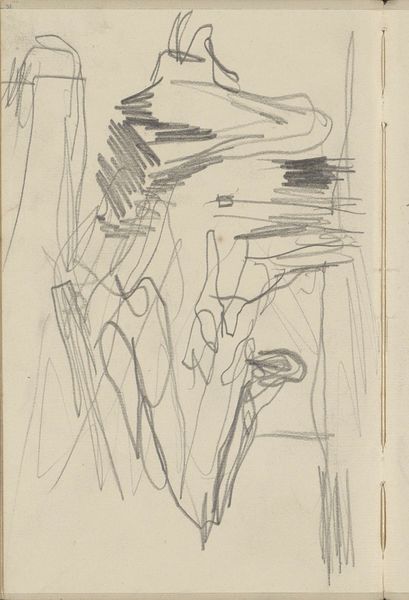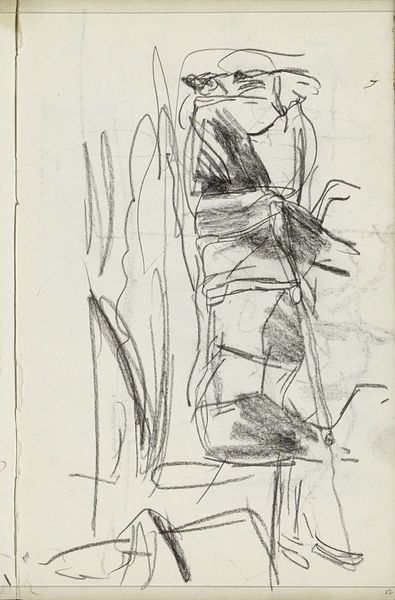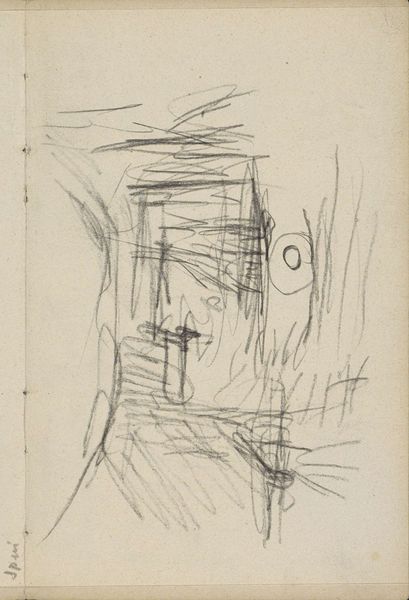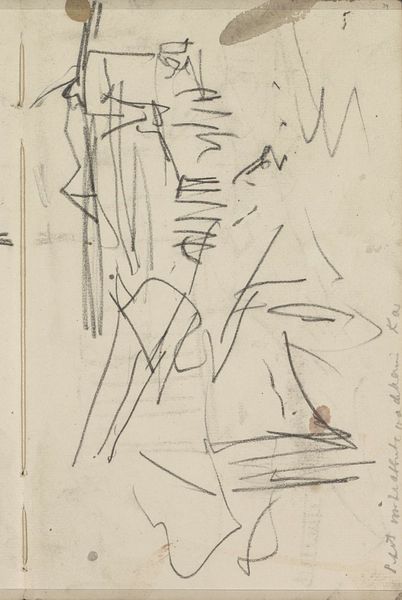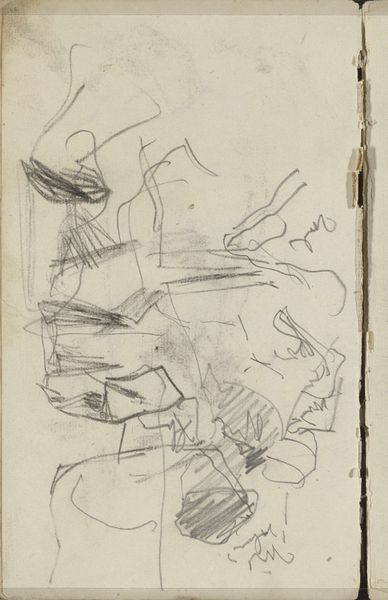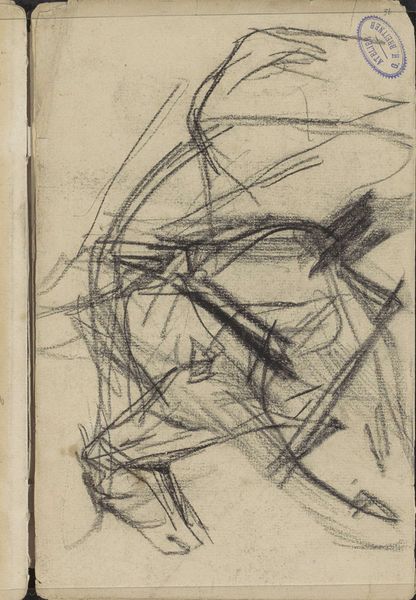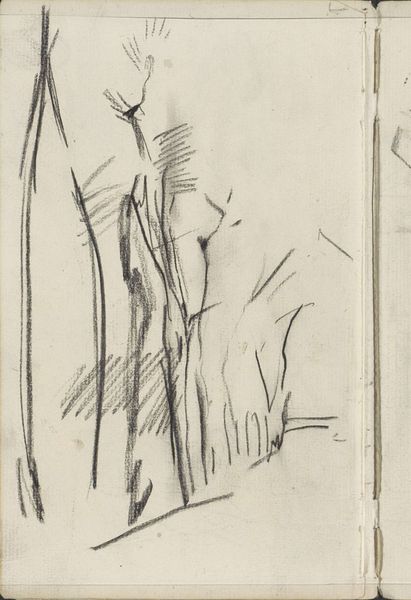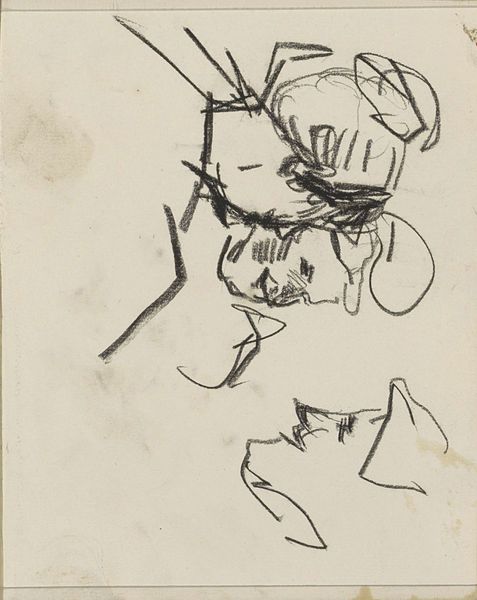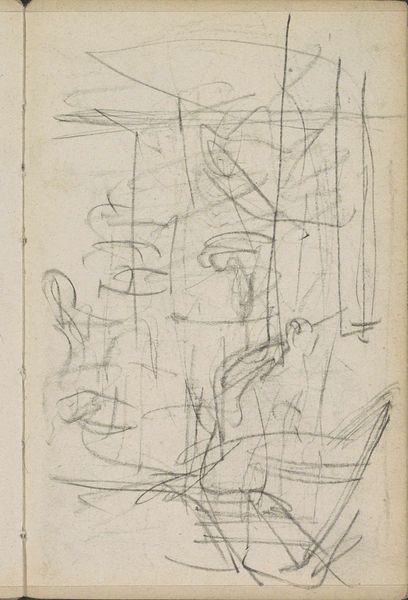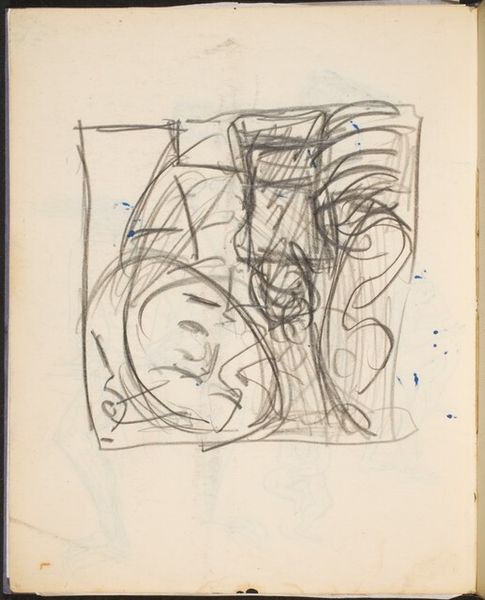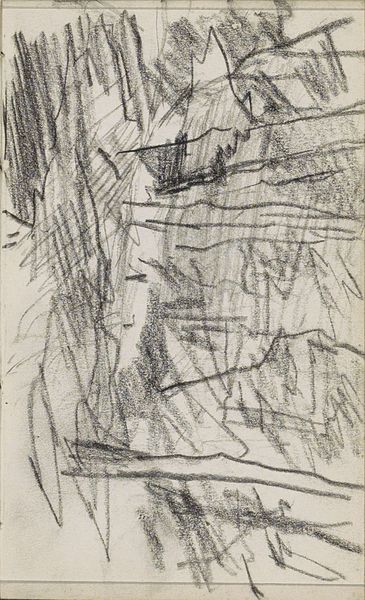
drawing, paper, graphite
#
drawing
#
impressionism
#
pen sketch
#
figuration
#
paper
#
graphite
Copyright: Rijks Museum: Open Domain
Editor: So, here we have George Hendrik Breitner's "Figuurstudies," likely from somewhere between 1881 and 1885. It's a drawing in graphite and pen on paper, currently held at the Rijksmuseum. It feels… unfinished, raw. What do you make of its historical significance? Curator: Breitner’s work is really fascinating when viewed through the lens of the social and cultural changes happening in Amsterdam at the time. He was capturing the burgeoning working class, the realities of urban life. This sketch, though seemingly simple, reflects the shift away from romanticized portrayals to a more documentary approach to art. What do you notice about the figures themselves? Editor: Well, they're gestural, very quick strokes, suggesting movement, almost fleeting. It's like he's trying to capture a moment in time rather than a posed portrait. Is this related to the Impressionist movement happening at the time? Curator: Exactly! And that’s key to understanding its historical place. Impressionism, even in drawing, was about capturing the essence of modern life. The 'unfinished' quality you noticed becomes an aesthetic choice, reflecting the ephemeral nature of urban existence. Breitner positioned himself outside the artifice of traditional studio settings, taking his sketchbook into the streets. Who do you think he aimed to portray in his art, and for whom was it meant? Editor: I guess, ordinary people. The intended audience was the upper middle class? Because it was also part of how they imagined the nation at the time, wasn't it? And part of creating this shared understanding through these images… Curator: Yes, that's a great way to put it. The depiction of everyday life helped to construct a shared visual culture, shaping national identity and consciousness. Consider where it was exhibited and what the curatorial trends were like back then. It sheds a lot of light on what art did within society and vice versa. Editor: That's incredible. I never really thought about how seemingly simple sketches could hold such social and political weight. It really emphasizes the power of art to reflect and even shape society's view of itself. Curator: Exactly, that’s why approaching art through its social history provides valuable tools. I’m glad you are more aware of the public role and politics involved.
Comments
No comments
Be the first to comment and join the conversation on the ultimate creative platform.
